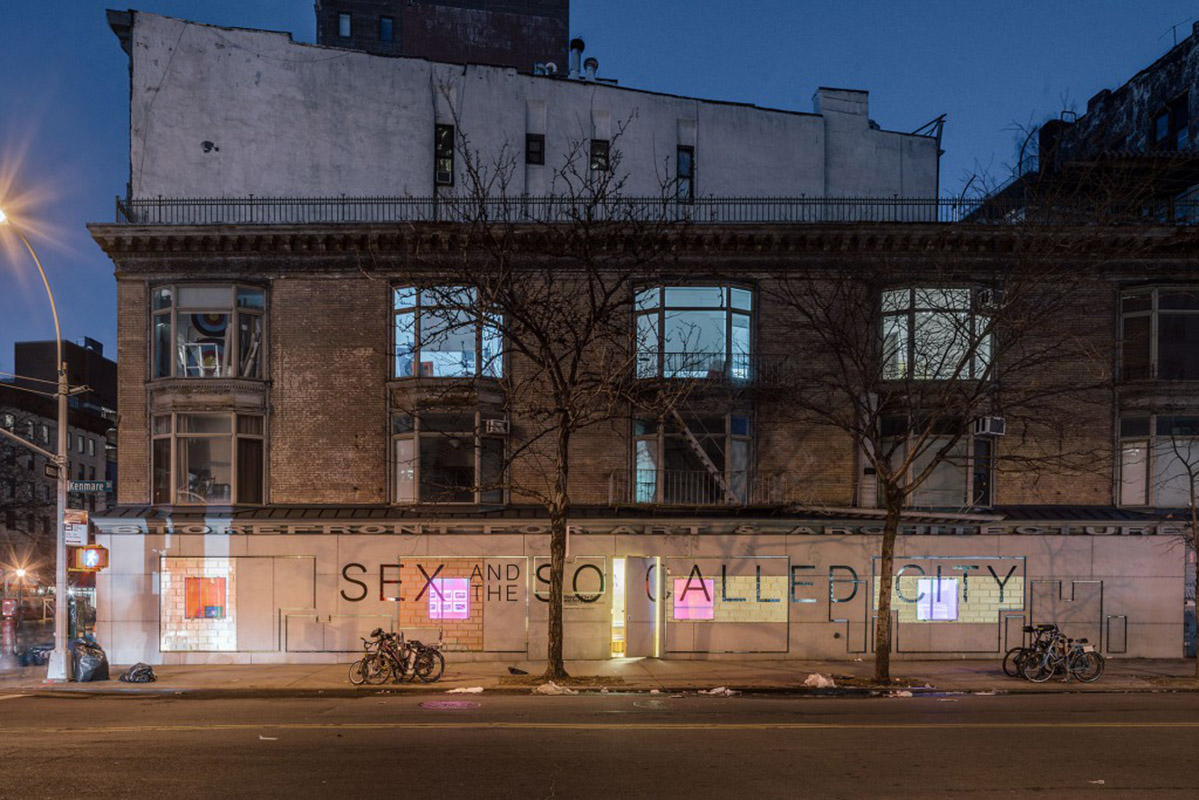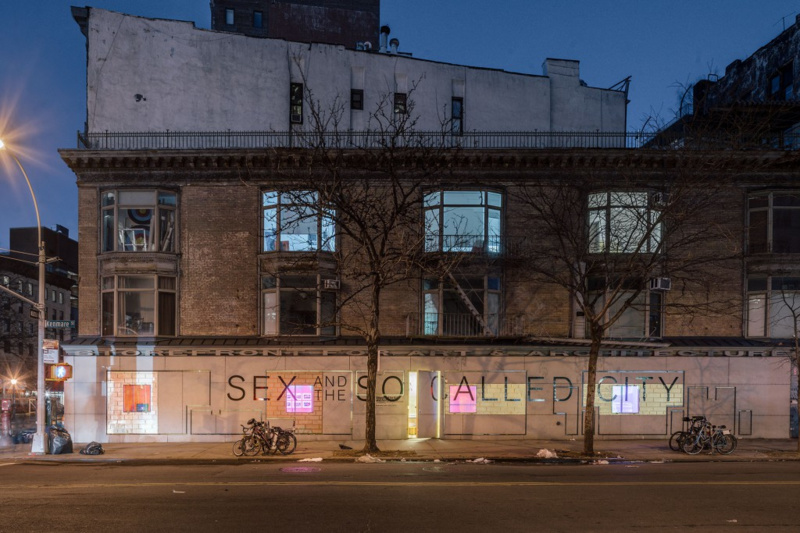 Photo by Miguel de Guzman courtesy the Storefront for Art and Architecture
Photo by Miguel de Guzman courtesy the Storefront for Art and Architecture
“In the past few years, architecture has become the sexiest of arts,” wrote New York Magazine in 2006. The aura of New York City depends heavily on its architects, who don’t build things so much as they build dreams and desires.
The image of the New York skyline, for example, is the city’s most valuable asset — maybe even more valuable than the skyline itself. “Passion for the city’s new construction is inspired not by an actual building, or even an old-fashioned 3-D model, but a rendering,” the New York Magazine article continued. As they put it, Dbox, the multimedia firm responsible for 432 Park, “is the real architect of our real-estate dreams, enticing buyers, wooing developers, and convincing critics that some building five years out is worthy of our skyline.”
The commodification of New York City, and its interaction with desire, image, media, and all things sensual, are brought together in a new exhibit at the Storefront for Art and Architecture, called Sex and the So-Called City. Taking cue from the twentieth anniversary of Sex and the City, “New York’s most famous archisocial manifesto,” curators Andrés Jaque, from the Office for Political Innovation, and photographer Miguel de Guzmán, have used popular and familiar scenes to track the changes in New York City that the show predicted and depicted. As Carrie Bradshaw writes in the second episode, “New York brought together Samantha’s two favorite passions—sex and real estate.”
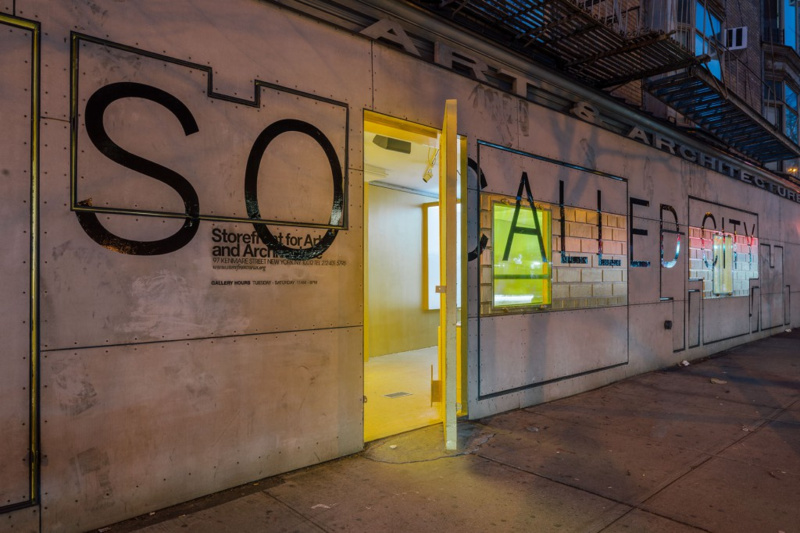 Photo by Miguel de Guzman courtesy the Storefront for Art and Architecture
Photo by Miguel de Guzman courtesy the Storefront for Art and Architecture
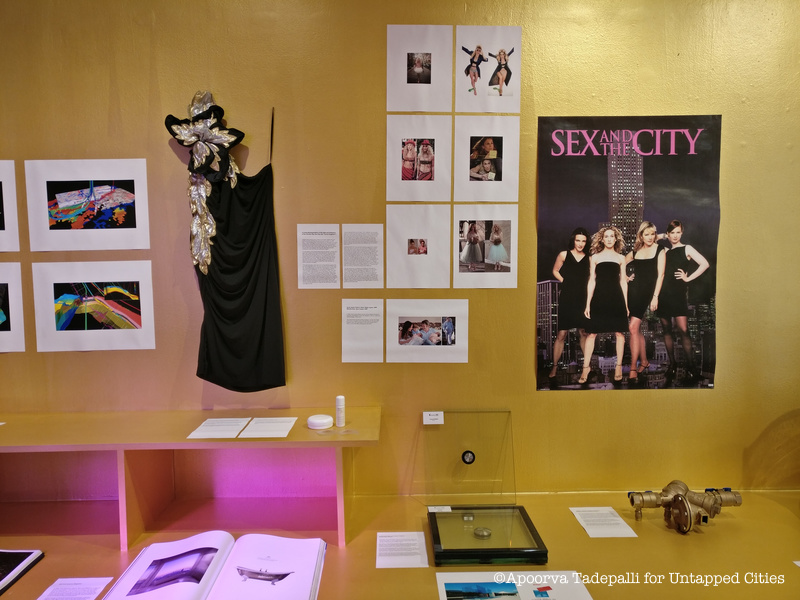
But the field of real estate is more about images and marketing than it is about physical materials. In what the exhibit calls a “post-2008 sanitized, assets-oriented urbanism,” the city is built on many wildly unconnected things, from YouTube and Grindr to the embalming machine that most funeral homes use that allow them to reuse waste fluid and make the most of their infrastructure, thereby resisting gentrification, to a futuristic fertility clinic at Columbus Circle dedicated to creating newer and better humans of transnational citizenship and sex appeal. The exhibit proposes the birth of a “highendcracy”: a system by which new laws and trading rights have enabled a city that can create and reproduce value exponentially.
Giuliani’s war on the gritty city is partially what led to the the shift from smoky night interiors to open-plan apartments. On Grindr, apartment towers replaced historic 80s and 90s matchmaking venues. The exhibit shows photographs of Grindr models, and displays samples of sex toys that became popular in the early aughts for a “real feel” that was manufactured by a pornography company that moved its shoots from grungy interiors to sunny condominiums. There is also a display of a sample of the glass used at 432 Park Avenue, a glass which replicates the blue sky until it looks like a CGI — the most expensive item used in the building. The exhibit reminds us that for the real estate industry, the contruction of these images, colors, reflections, and renderings are more important than the construction of buildings.
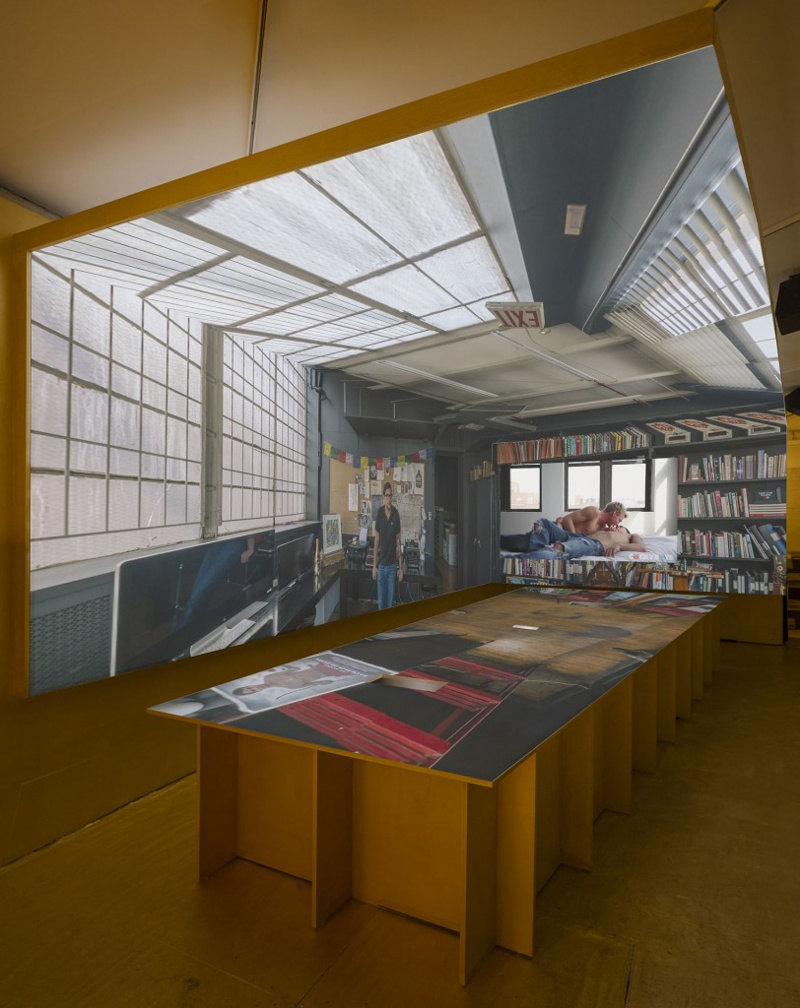 Photo by Miguel de Guzman courtesy the Storefront for Art and Architecture
Photo by Miguel de Guzman courtesy the Storefront for Art and Architecture
In a video playing on loop across the room from the display, a “Manhattan Guy” tells Miranda, “I hate the country. I haven’t left Manhattan in ten years.”
“And you’re proud of that?” she asks incredulously.
“Everything you need is right here…why leave?” he says.
“Perhaps to experience a world outside of Manhattan?”
He laughs. “There is no world outside Manhattan.”
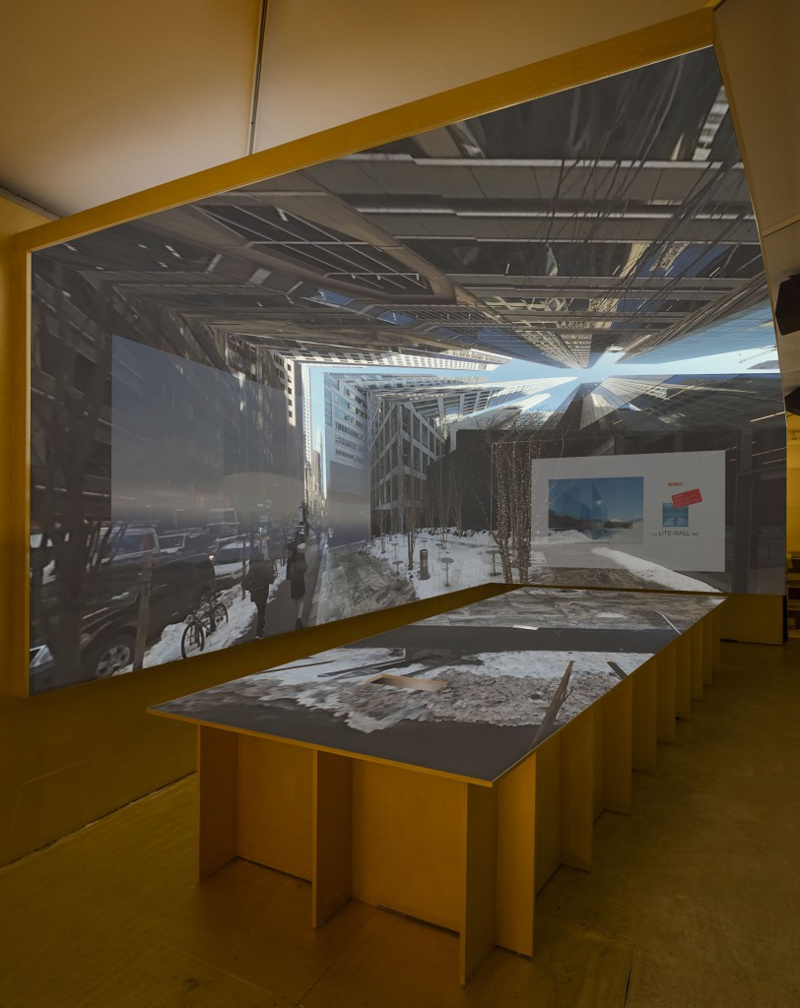 Photo by Miguel de Guzman courtesy the Storefront for Art and Architecture
Photo by Miguel de Guzman courtesy the Storefront for Art and Architecture
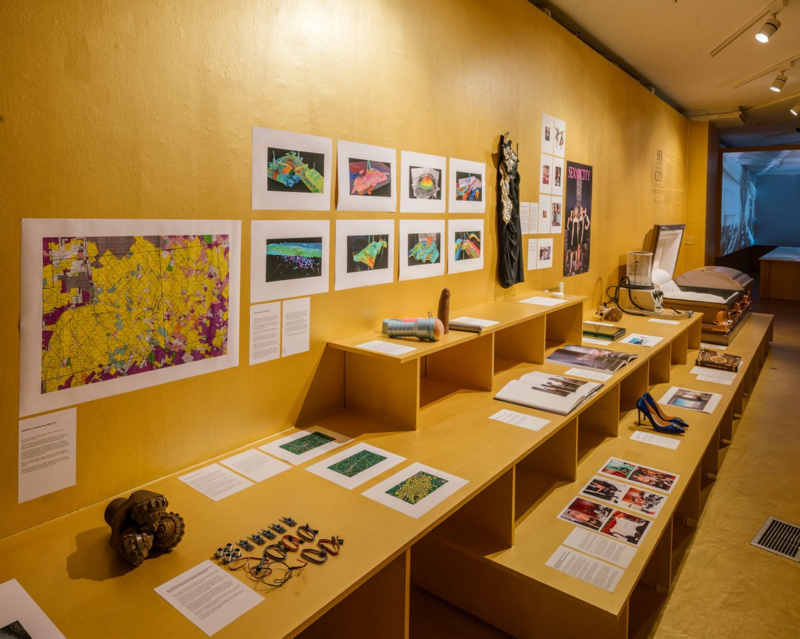 Photo by Miguel de Guzman courtesy the Storefront for Art and Architecture
Photo by Miguel de Guzman courtesy the Storefront for Art and Architecture
The video cuts between scenes from the show and documentary-style footage, then moves to the Manhattan that is, in fact, outside of Manhattan — to rural Pennsylvania and Virginia, where the cost of energy consumption in New York has been displaced, and without which Manhattan real estate wouldn’t exist the way it does. Secular collective anti-fracking communities like Twin Oaks, which bears the cost of being surrounded by heavily fracked land, and whose energy consumption patterns have been put on display as well, show how far outside of Manhattan that Manhattan’s reach really is.
Sex and real estate both depend less on reality than they do on fantasy—both our own and others. Especially in New York, the two have much more in common than we may think.
Sex and the So-Called City is on view at the Storefront for Art and Architecture (97 Kenmare Street) until April 3, 2018. For more information, visit storefrontnews.org.
Next, check out 19 Art Installations and Exhibits in NYC Not to Miss in February.






